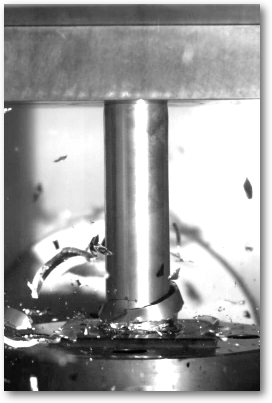High Strain Rate Characterization of Mg Alloys
Executive Summary
In support of the USAMP Project AMD 604 Magnesium Front End Research and Development, we are developing experimental methods and techniques for conducting high rate experimental tests (tension, compression and shear) and damage analysis of three characteristic Mg alloys. The objective of the research is to determine the material properties for automotive Mg alloys, especially their rate dependent properties, yield asymmetry, anisotropy and rate-dependent damage evolution, and formulate the parameters necessary for various constitutive models used in the automotive simulations. The experimental data also provide information for development and validation of new constitutive material models in other related Mg projects.

The high-rate tests are conducted at the Oak Ridge National Laboratory using a high-rate servo-hydraulic test machine that has the capability to operate at constant crosshead velocity. Special fixtures are utilized for conducting strain-limited material damage evolution studies at various strain rates. High-speed video and Digital Image Correlation are used to document the specimen response as well as to measure displacement data for local strain measurements and fracture onset analysis. For characteristic subset of loading states, material initial state with respect to porosity, grain size, and secondary particles is assessed through metallographic and X-ray tests. Evolving damage by void nucleation at secondary particles, void growth and coalescence by micro-localizations is also assessed by metallographic and X-ray tests and correlated with measurement of evolving effective material properties at macro level. After correlation of micromechanics and macroscopic data from selected tests the emphasis is on using measurements of effective material properties. The experimental scope is limited to tests necessary to develop parameters for models based on plasticity of voided solids, anisotropic plasticity continuum damage models and models necessary for determining localization and failure parameters for FEM simulations. This work is the first systematic investigation of properties as a function of loading speed, extent of deformation, and loading type for automotive Mg alloys.